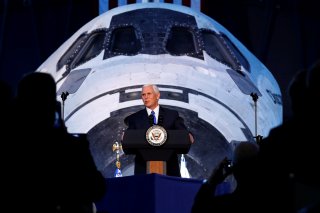Why Did NASA Kill Off the Space Shuttle?
“The shuttle program has built the largest space station in history, has revolutionized science with the Hubble Space Telescope and has inspired a generation to dream of space.”
The final flight of NASA’s vaunted Space Shuttle Program was completed when Atlantis touched down at Kennedy Space Center on July 21, 2011.
It was indeed an end of an era, as NASA’s space shuttles were unlike any other spacecraft built during the 30-year operation of the program. These spacecraft were unlike the much smaller capsules of NASA’s Apollo era, in which they were launched on the tips of rockets and then splashed back into the ocean.
These jetliner-like space shuttles used powerful boosters to streak into space, and then it was able to return to Earth’s solid ground as if it were a highly aerodynamic glider. When it touched down on the runway, it naturally brought to mind a commercial airplane.
While in orbit, these space shuttles circled our planet at about 17,500 miles an hour, allowing the crewmembers to see a sunrise or sunset every 45 minutes.
However, all good things must come to an end. In 2004, seven years before the final space shuttle flight, President George W. Bush effectively put the final nail in the coffin when he announced that the space shuttles would be retired.
The three remaining orbiters and the prototype shuttle, Enterprise, are now housed in museums in California, Florida, New York and Virginia.
Although many have blamed budget restrictions on the program’s shutdown, NASA also sensed bigger challenges on the horizon, which meant developing a host of new groundbreaking technologies. For its next phase of manned space exploration, NASA is designing and building spacecraft that aim to send humans to the moon and Mars.
Moreover, NASA is fully aware of the rise and the important role that private companies like SpaceX will play in future human exploration of space. Therefore, the space agency has partnered with them to launch commercial vehicles to the International Space Station and perhaps beyond.
Although NASA’s Space Shuttle Program is no longer in operation, what can’t be taken away are the amazing history-changing moments it has given us.
For example, in 1983, space shuttle astronaut Sally Ride became the first U.S. woman in space as part of the Challenger crew. The April 1990 Discovery mission placed the Hubble Space Telescope into orbit. And in 1995, the space shuttle Atlantis docked at the Russian space station Mir, bringing together Earth’s two great space programs.
The program also had to endure several tragedies, most notably the 1986 Challenger disaster that killed seven astronauts. Misfortune struck again in 2003 when Columbia disintegrated over Texas just 16 minutes before its scheduled landing, killing all seven crewmembers.
Outgoing shuttle program manager John Shannon took a moment to look back at the Space Shuttle Program during a 2011 ceremony marking the end of the NASA venture.
“I would like to take this moment to thank the team for all their hard work and dedication over 30 years that has led to a successful conclusion of the Space Shuttle Program,” he said.
“The shuttle program has built the largest space station in history, has revolutionized science with the Hubble Space Telescope and has inspired a generation to dream of space.”
Ethen Kim Lieser is a Tech Editor who has held posts at Google, The Korea Herald, Lincoln Journal Star, AsianWeek and Arirang TV.
Image: Reuters.

